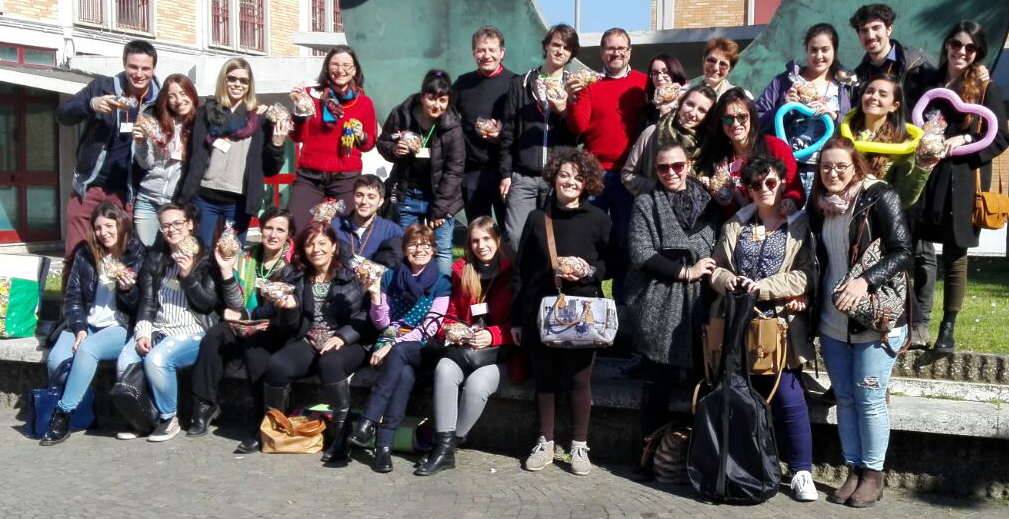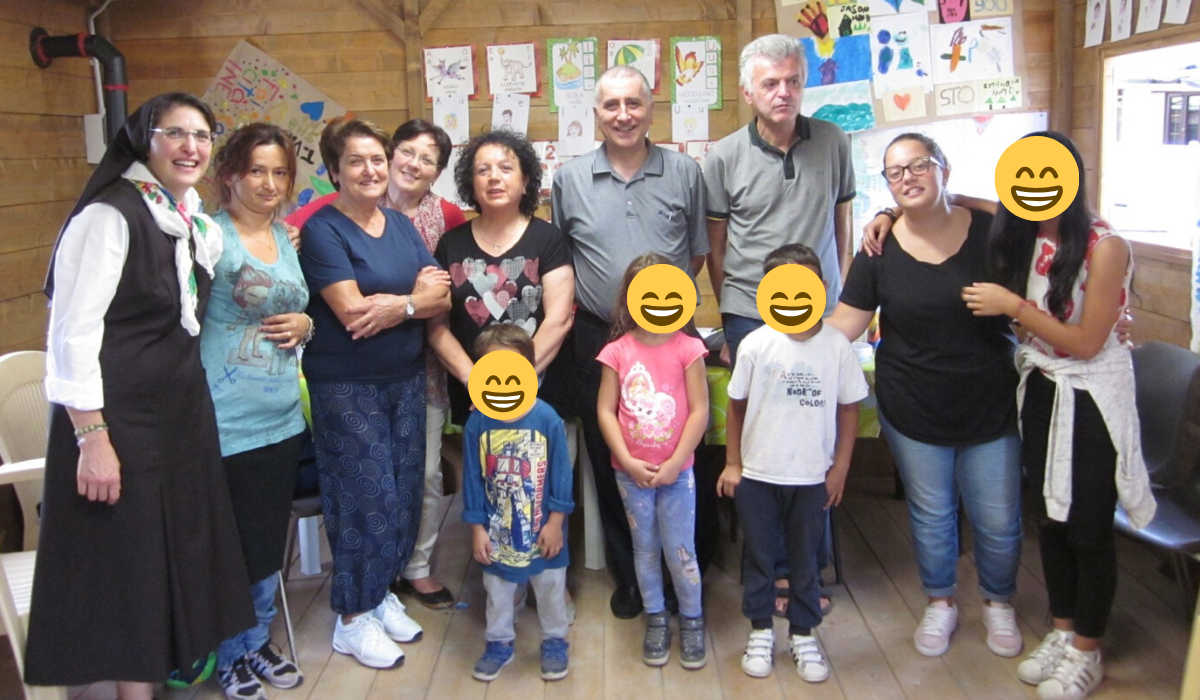
Workshop
From murals to hospitality, the Lecce revolution
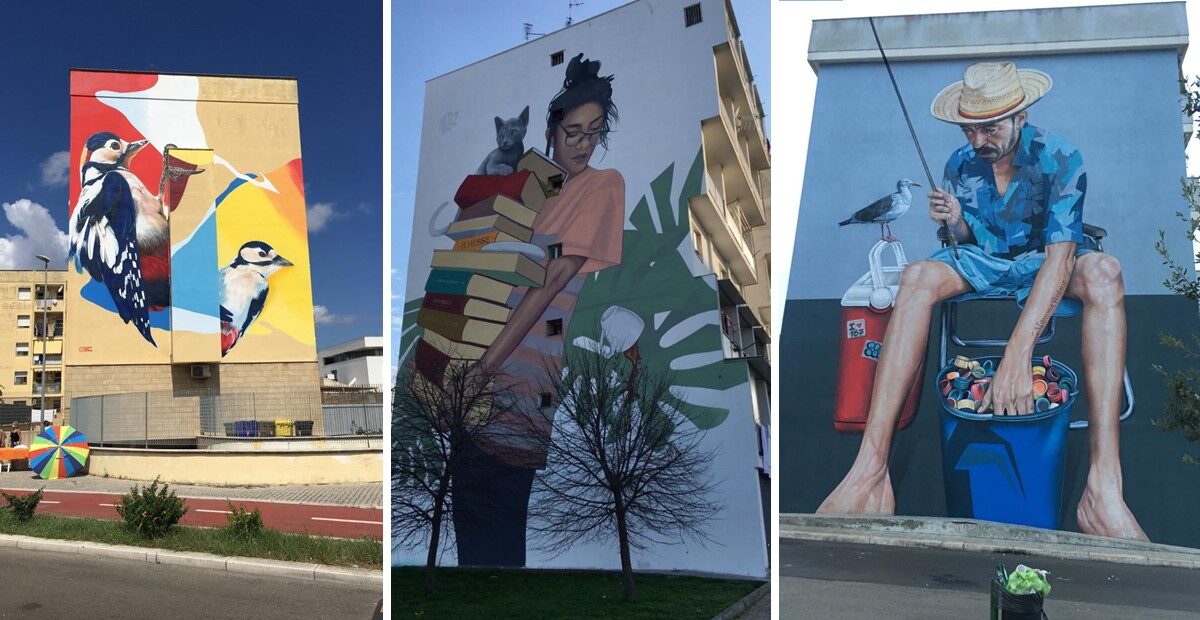
“Beauty will save the world.” It seems quite fitting to cite these words of Dostoevsky when describing the rebirth that has taken place in the Stadio (Stadium) neighborhood of southern Italy.
You know how they say that appearances also matter? Well, in my opinion, this story shows that appearances matter a lot. It concerns an Italian city in the cultural hub of Salento, “the Florence of the South.” The city of Lecce continues to fascinate visitors with its baroque but fragile buildings. Since meeting Tina D’Oronzo and Father Gerardo Ippolito, I can say, however, that my amazement goes beyond the beauty of the city. There is a story in Lecce that is made of many stories that are interwoven and express not only beauty, but also life, relationship, and rebirth.
“I have been here for 10 years” – says Father Gerardo, parish priest at Saint John the Baptist Church. The neighborhood is the 167 B, or Stadio area, begun in the ’70s and favored by the public housing which soon transformed the neighborhood into a dormitory where there are now many families and many lonely people who are left to their own devices, where young people cannot find work… in other words, nothing at all like the Lecce that tourists are familiar with.
“In recent years, the Stadio neighborhood has turned into a difficult place, due to a lack of social assistance, work, and a growing increase in delinquency, which has made it impossible for young people to go out in the evening. The situation worsened in the late ‘70s when the State decided to hold the trial here for the Sacra Corona Unita, a mafia-like criminal organization that is headquartered in Puglia. The trial blocked all development in this neighborhood. Even now, when you walk the streets, you can’t find a single coffee bar or shop”.
But there is something different here now, which is drawing visitors, tourists, and onlookers to this very neighborhood: gigantic works of art, murals, painted on the facades of the once dark and soulless buildings. The murals are not only redeveloping the neighborhood but are also causing a real social revolution under the name of fraternity.
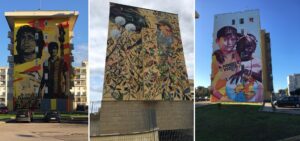
“The first idea was to make the wall at the oratory more colorful and cheerful. That was the first mural, which was also appreciated by the local people. The interesting thing is that the young people did not smear it or dirty it in any way. This made us realize that we could continue”.
Little by little, thanks to a slogan and some young writers from the local region, artists began to arrive from many parts of the world to help add beauty to the buildings in the Stadio neighborhood. And they were joined by photographers, tourists, and local administrators.
“The nice thing is that the artistic work is the result of a fraternity that was created between artists and local people from the neighborhood. The only meeting points are the local parish and the Middle School. It was only natural, therefore, that the families themselves should take an interest in the artists. The women cooked meals for them, several people living in the buildings they were painting, brought them coffee and pasticciotti – a local pastry – and organized a day at the seaside… strong bonds of friendship were created, a spontaneous fraternity that did everyone good”.
The most evident confirmation of what Father Gerardo says was the fact that most of the artists left with tears in their eyes because they felt that they had been part of a project that was of real help to the most vulnerable among us, and it was part of a much larger extended family. Another confirmation came from Tina D’Oronzo who is a personal witness to one of the main threads of fraternity in the city. Tina helped to begin the Chiara Luce Community, which has much to do with Father Gerardo’s work.
“The most evident aspect of the work by the parish is the murals, but when you look closer”, Tina suggests, “they are only one part of a much vaster effort at rebuilding people’s lives, starting, from the peripheries, from all the peripheries, welcoming mothers with children and minors who are on their own. Indeed, to be precise: first the Chiara Luce Association was begun and then the Community. And both are the result of a group experience, a group of people who were already friends and linked here in Lecce by a common ideal, the ideal of a more united world”.
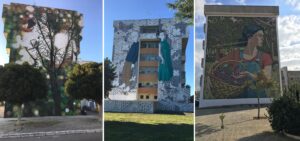
By virtue of those values the initiators of the project were self-funded, setting aside even important purchases for their own families. “But we’ve never regretted that decision, not even in the most difficult moments”. Today’s community does much to welcome minors, it’s true, but it also does much to help heal may existential wounds: “Our motto has always been: ‘wherever there is suffering, there is space for giving, a space for us’”.
The circle widens as the Association and the parish become spaces for collaboration with other locals who are making a difference and paying attention to the suffering. That’s where they all find a natural connection. This is the “most beautiful soup kitchen in the world,” as it has been called, where parish and Association work hand in hand.
Tina continues: “It’s true, it’s been called the most beautiful soup kitchen of the world, because we, together with Father Gerardo, don’t just provide food for those who cannot buy their own. We eat alongside them, build a relationship with them, eat together, and this represents something beautiful. At times, people come without eating anything; they just wanted some companionship, someone to listen to them, or a caress”.
Of course, the goal is not social assistance but, through daily sharing, to reach economic and existential independence. This led to the opening of a tailor shop that gives work to five women who can now provide food for their families, but also a jeweler’s shop that works in silver and precious stones and provides training to teenagers who don’t have many prospects.
Some would have called them mad, but judging from the result, the process they began was the right one. Tina continues: “It wasn’t easy, of course, but also the decision to invest out of our pocketbooks, gave us a further reason to share with those who were most in need, to share from our own resources, our personal time, ideas, and life”.
Father Gerardo continues: “This was also a chance to work alongside people who perhaps don’t share the faith, who would never come to Mass, but they believed in fraternity and have extraordinary human values that they make concrete in service to their neighbors. Then, perhaps, those who don’t go to Mass, send their children to us, and this is because it’s all based on love”.
